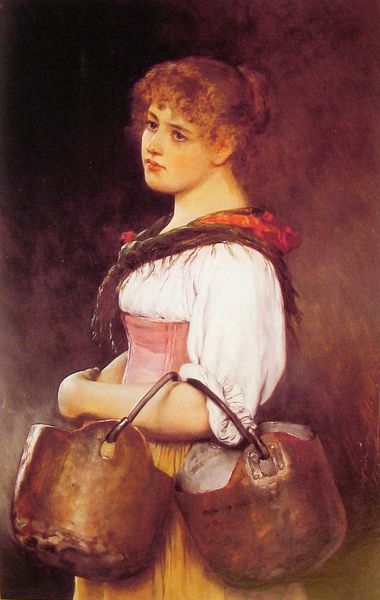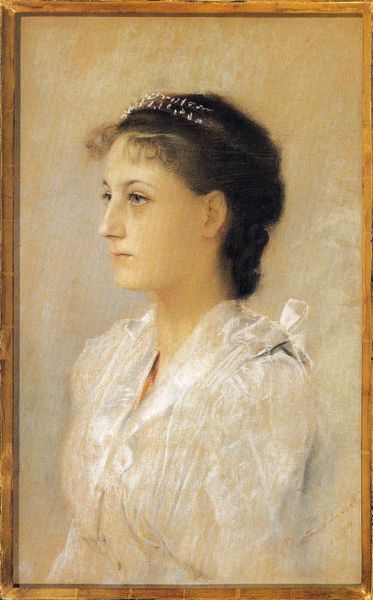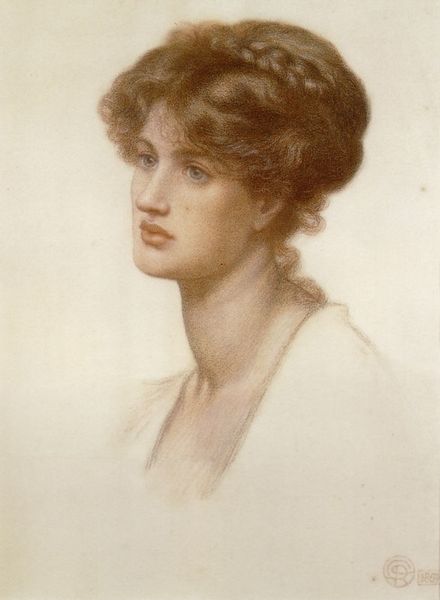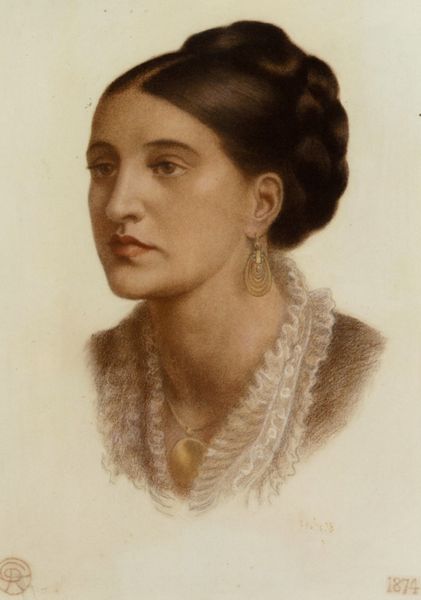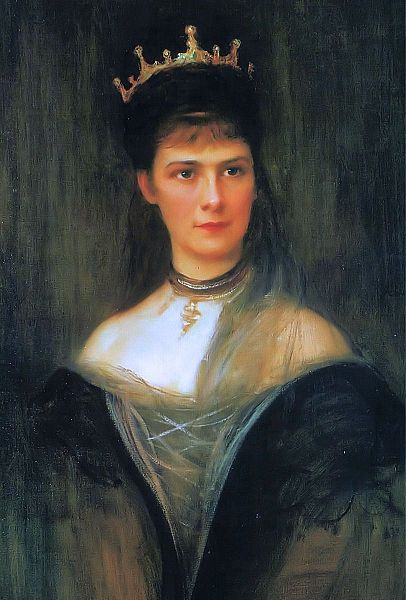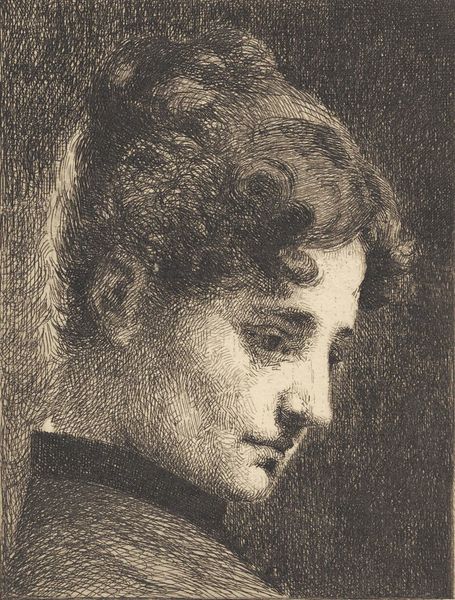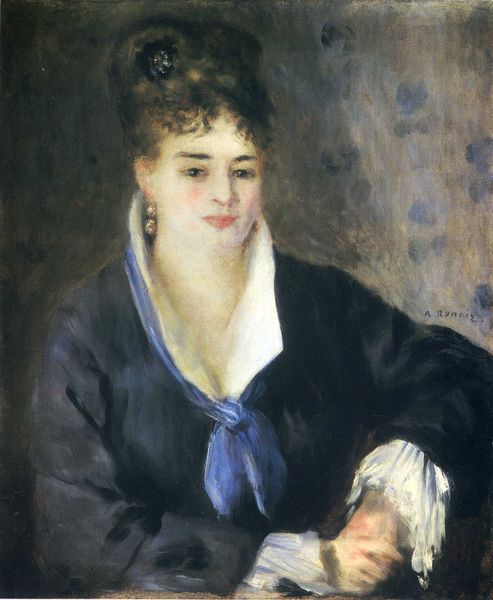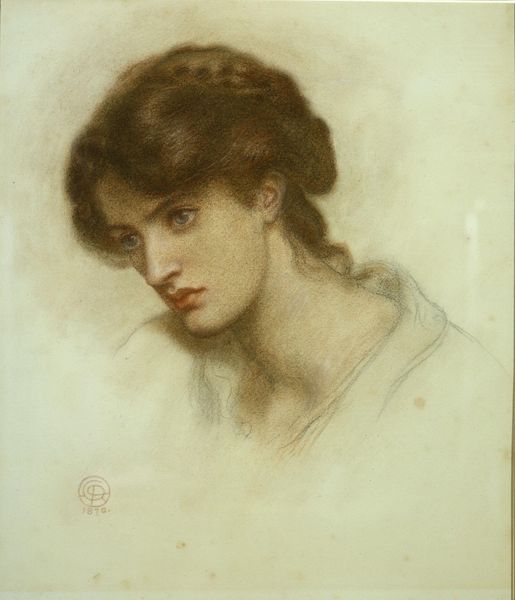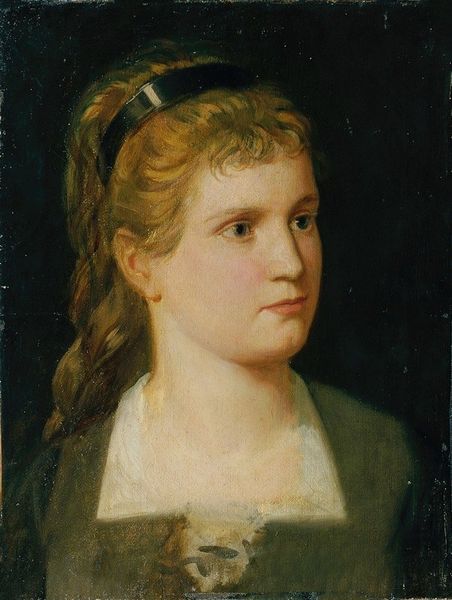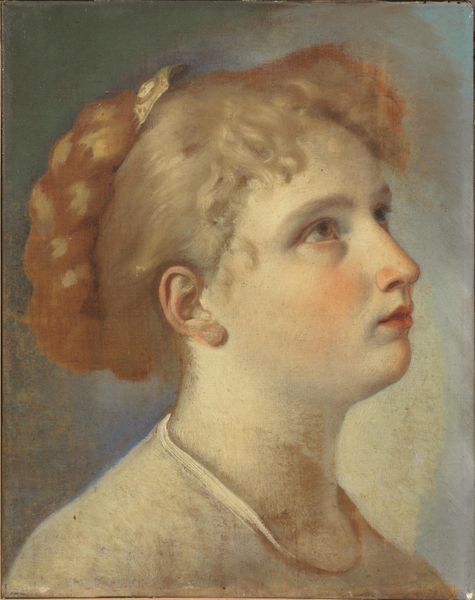
Dimensions: 47.6 x 36.8 cm
Copyright: Public domain
Curator: Rossetti's 1867 pencil portrait, titled "Ellen Smith," offers a fascinating glimpse into Pre-Raphaelite aesthetics. What strikes you initially? Editor: The softness, undeniably. It's almost dreamlike in its hazy edges. There's an inherent intimacy because the gaze is averted. What is the story behind this figure? Curator: Ellen Smith was one of Rossetti's models. The artwork situates her within the Pre-Raphaelite's fascination with feminine beauty, and her red hair was likely meant to tie to his muse, Elizabeth Siddal. However, this work should not be seen just through the eyes of male desire. Ellen looks intelligent and rather detached from her representation. The question arises, to what degree did she engage, or perhaps even resist, this romantic idealization? Editor: True, her gaze hints at a mind of her own. Looking at the technique, note how Rossetti uses line to create volume, yet the contours remain surprisingly indistinct, enhancing that dreamy quality. This, along with the subtle shading of her features and neck, helps bring out this face. I'm intrigued by that minimal rendering. How does this align with or depart from traditional portraiture? Curator: Portraiture at this time often served to elevate the subject’s status and virtue. Rossetti certainly plays with this convention. It can be read in relation to the political movement that promoted the emancipation of women and called for better access to education for them. The artist might offer some insights to his patron through this aesthetic lens. The delicate nature of the pencil medium underscores a certain vulnerability. Editor: And the composition—the subject almost fills the entire space, with just the simple high collar dress visible. It focuses our attention solely on her face and that slightly enigmatic expression. Curator: Precisely. It prompts us to consider the artist’s choice to represent the model as an individual, while situating her within the prevailing aesthetic ideals. It invites questions about agency, representation, and the negotiation of identity in art. Editor: It seems that every element—composition, the medium, line quality— serves the emotional charge of romanticism that defines Rossetti's practice. Ultimately, Ellen remains both present and elusive. Curator: Her presence indeed lingers. The gaze has staying power.
Comments
No comments
Be the first to comment and join the conversation on the ultimate creative platform.

